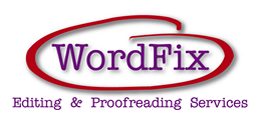Do you edit using American, British and Australian English?
This is a client’s choice, although Australian English is the default.
Do you have a minimum service charge?
One hour is the minimum service charge.
How do you charge?
Clients are generally billed by the hour, but a project cost may be negotiated.
Is there a minimum number of words that you accept for a job?
No. Jobs of all sizes are accepted.
What types of publications do you work on?
Examples of the types of publications and projects include the following:
- higher education and professional development course material
- technical reports
- corporate reports
- research reports
- annual reports
- policies
- codes of practice
- financial disclosure documents
- manuals
- textbooks
- marketing material
- magazines
- newsletters
- websites
What document formats do you work with?
Word, PDF and Excel documents.
What does a proofreader look for?
A proofreader will check a document for such things as grammar, spelling and punctuation.
What is structural or substantive editing?
Structural (or substantive) editing involves the assessment and reworking of documents to improve their organisation and content. The benefits include improved flow, clear message and fluent language…
What is the difference between proofreading and copyediting?
Proofreading is the final task in the publishing process before a publication ‘goes live’. A proofreader will check a document for such things as grammar, spelling and punctuation.
A copyeditor will carry out the proofreading tasks as well as make suggestions to improve clarity, consistency, factual errors, sentence structure and style.
What about confidentiality?
All clients’ documents are treated confidentially.



